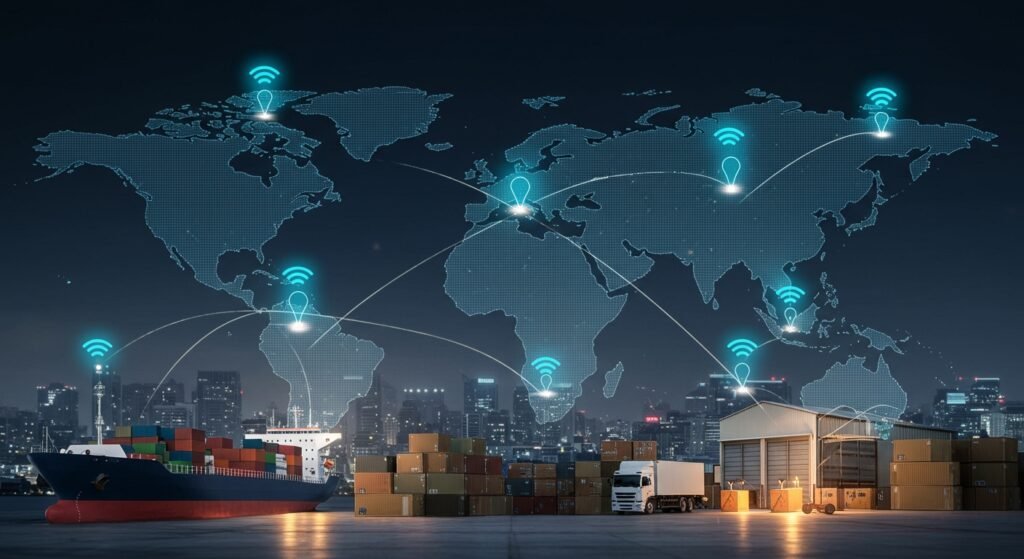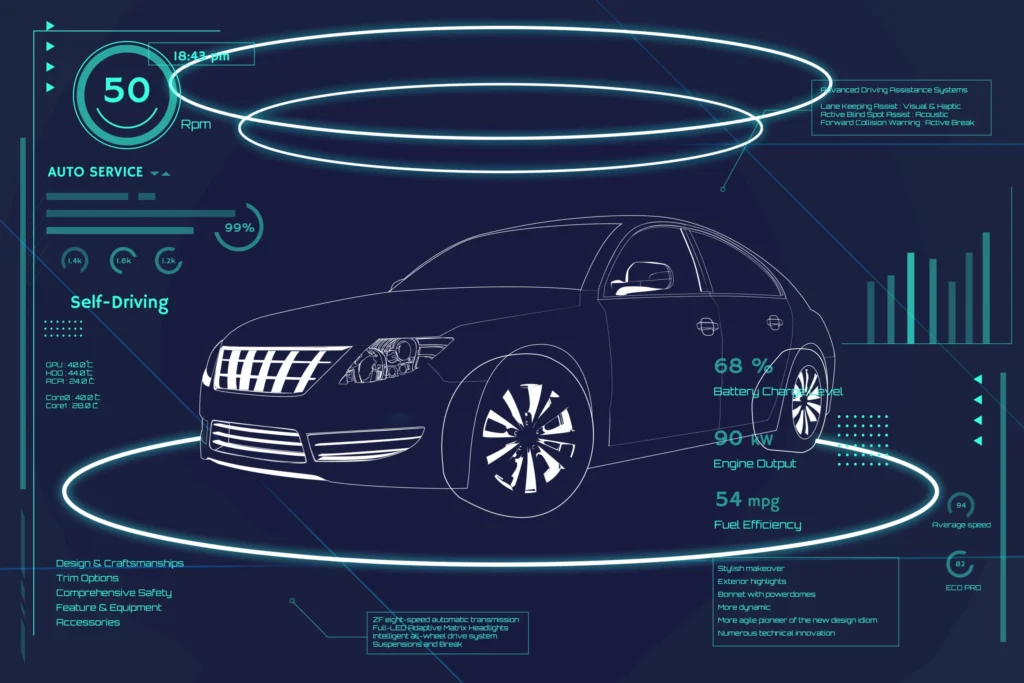Enhancing Supply Chain Transparency through Blockchain and IoT
In an increasingly complex global marketplace, supply chain transparency is no longer a luxury but a necessity. Consumers demand to know the origin of their products, regulators require stringent compliance, and businesses seek greater efficiency and trust. The traditional supply chain model often struggles with opacity, creating vulnerabilities to fraud, inefficiencies, and a lack of accountability. Fortunately, the convergence of advanced technologies like the Internet of Things (IoT) and blockchain in logistics offers a powerful solution, paving the way for unprecedented visibility and integrity from source to shelf.
Table of Contents
- The Challenge of Opaque Supply Chains
- How IoT Revolutionizes Data Collection
- Blockchain in Logistics: The Foundation of Trust
- Synergizing Blockchain and IoT for Ultimate Transparency
- Benefits of Enhanced Supply Chain Transparency
- Implementing Transparency Solutions: Key Considerations
- Real-World Applications and Future Outlook
The Challenge of Opaque Supply Chains
Modern supply chains are intricate webs involving numerous stakeholders across various geographical locations. This complexity often leads to information silos, fragmented data, and a lack of a single, verifiable source of truth. Without robust transparency, companies face significant risks including product counterfeiting, unethical sourcing practices, delays, and an inability to quickly identify and recall faulty products.
Current Limitations and Risks
- Information Asymmetry: Different parties have access to different sets of data, leading to misunderstandings and inefficiencies.
- Manual Processes: Reliance on paper-based records or disparate digital systems can introduce errors and slow down operations.
- Lack of Trust: It’s difficult to verify claims of origin or authenticity without an independent, immutable record.
- Vulnerability to Fraud: Opaque systems are prime targets for illicit activities, impacting brand reputation and consumer safety.
How IoT Revolutionizes Data Collection
IoT devices are the eyes and ears of the modern supply chain. These small, interconnected sensors can be attached to products, pallets, containers, or vehicles, collecting a wealth of real-time data as goods move through the chain. From temperature and humidity to location and shock detection, IoT sensors provide granular insights that were previously unattainable.
Real-time Tracking and Sensory Data
Imagine knowing the exact temperature history of a perishable food item from farm to grocery store, or the precise location of a high-value shipment at any given moment. IoT devices make this possible, feeding constant streams of data that can be used to monitor conditions, predict potential issues, and ensure product integrity. This real-time data is crucial for proactive management and immediate response to deviations.
Blockchain in Logistics: The Foundation of Trust
While IoT excels at data collection, blockchain provides the secure, immutable ledger needed to store and verify that data. A blockchain is a decentralized, distributed database that records transactions in a way that makes it nearly impossible to alter or hack. Each ‘block’ contains a timestamped batch of transactions, and once added to the chain, it cannot be changed.
Immutable Records and Smart Contracts
When IoT data is written to a blockchain, it creates an unchangeable record of events. This means every scan, every temperature reading, every location update becomes part of a permanent, verifiable history. Furthermore, smart contracts—self-executing agreements stored on the blockchain—can automate actions based on specific conditions, such as triggering payment upon delivery or sending alerts if certain environmental parameters are breached. This automation streamlines processes and significantly reduces the need for intermediaries, fostering greater trust and efficiency in blockchain in logistics applications.
Synergizing Blockchain and IoT for Ultimate Transparency
The true power lies in the seamless integration of IoT and blockchain. IoT devices collect the raw, real-time data from the physical world, while blockchain provides the secure, transparent, and verifiable platform to store and manage that data. This creates an end-to-end, digital twin of the physical supply chain, offering unprecedented visibility.
For instance, an IoT sensor on a pharmaceutical shipment records its temperature every hour. This data is immediately uploaded to a blockchain ledger. If the temperature exceeds a predefined threshold, a smart contract automatically triggers an alert to all relevant parties and may even initiate a return process, all recorded immutably. This synergy provides a complete, trustworthy narrative of a product’s journey.
Benefits of Enhanced Supply Chain Transparency
Adopting blockchain and IoT for supply chain transparency yields a multitude of advantages for businesses, consumers, and regulators alike.
- Improved Efficiency and Cost Reduction: Automated processes and real-time data minimize delays, reduce administrative burdens, and optimize inventory management.
- Reduced Fraud and Counterfeiting: Immutable records make it incredibly difficult to introduce fake products or manipulate data.
- Better Compliance and Regulatory Adherence: Easier to prove adherence to standards and regulations, simplifying audits and reducing penalties.
- Enhanced Consumer Trust: Consumers can verify product authenticity, origin, and ethical sourcing, building stronger brand loyalty.
- Faster Issue Resolution: Pinpoint the exact source of a problem (e.g., a spoiled batch) quickly, minimizing impact.
Comparative Analysis: Traditional vs. Blockchain/IoT Supply Chains
| Feature | Traditional Supply Chain | Blockchain & IoT Enhanced Supply Chain |
|---|---|---|
| Data Integrity | Prone to manipulation, silos | Immutable, verifiable, shared ledger |
| Visibility | Limited, often delayed | Real-time, end-to-end tracking |
| Trust | Requires intermediaries | Trustless system via cryptography |
| Efficiency | Manual, slow, error-prone | Automated, fast, error-reduced via smart contracts |
| Fraud Risk | High | Significantly reduced |
Implementing Transparency Solutions: Key Considerations
While the benefits are clear, successful implementation requires careful planning. Companies must consider the initial investment in IoT infrastructure, the integration with existing ERP systems, and the training of personnel. Pilot projects can help demonstrate value and build organizational buy-in. Partnerships with technology providers specializing in both blockchain and IoT are also crucial for a smooth transition. To delve deeper into the technological landscape shaping the future, read more about digital transformation in logistics.
Real-World Applications and Future Outlook
From tracking luxury goods to ensuring food safety and managing pharmaceutical cold chains, blockchain and IoT are already transforming industries. Companies like IBM and Maersk have successfully implemented blockchain solutions for global shipping, demonstrating significant reductions in paperwork and processing times. The future promises even more sophisticated integrations, potentially leading to fully autonomous supply chains driven by AI, IoT, and blockchain. For further insights into industry trends, you can explore reports from leading supply chain organizations like the Council of Supply Chain Management Professionals.
Conclusion
The journey towards a fully transparent supply chain is a continuous one, but the combination of IoT for data capture and blockchain for secure data management offers the most promising path forward. By creating an indisputable, real-time record of every product’s journey, businesses can foster trust, enhance efficiency, and build resilient supply chains capable of meeting the demands of tomorrow. Embracing blockchain in logistics is not just about technology adoption; it’s about redefining trust and accountability in global commerce.


